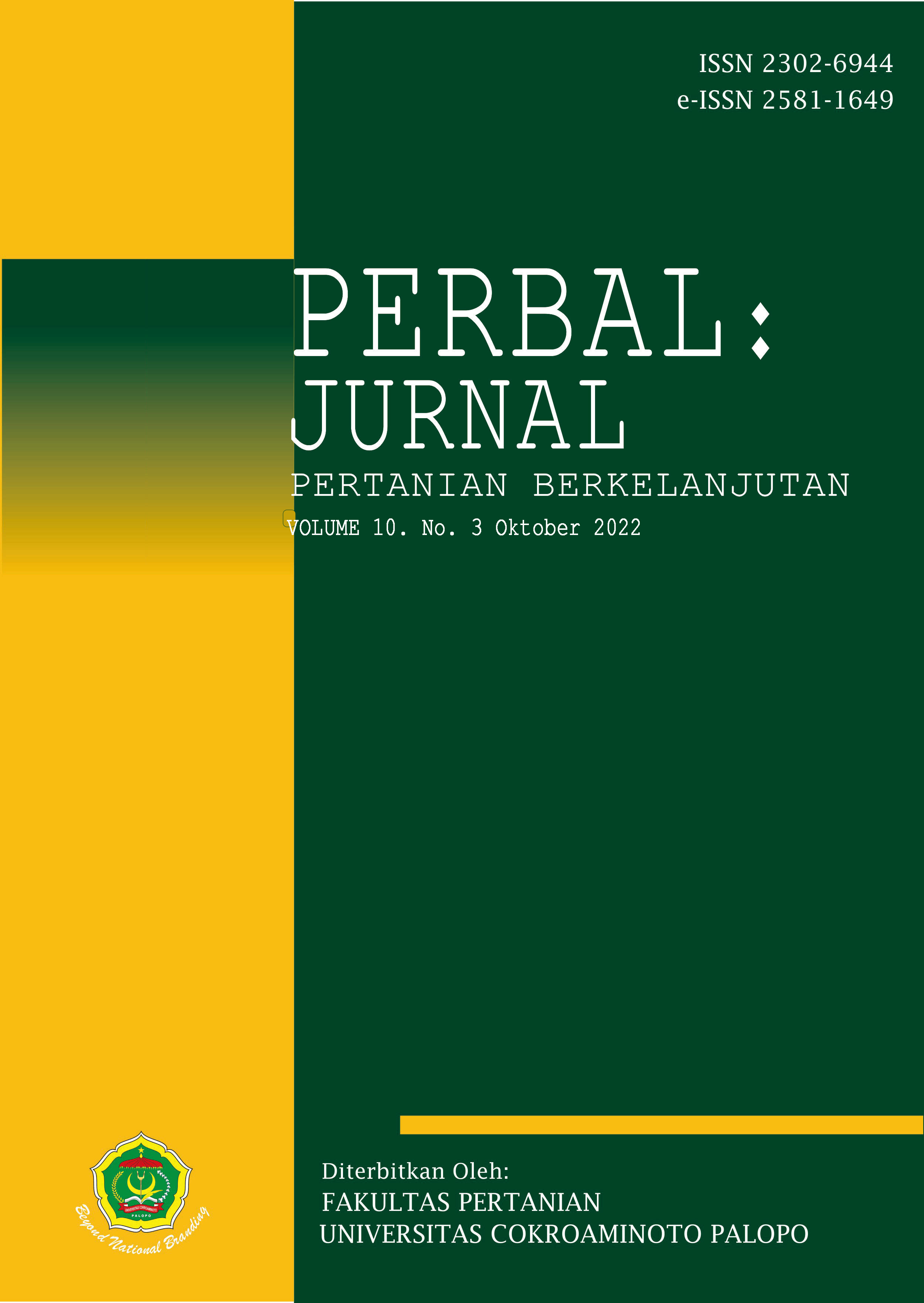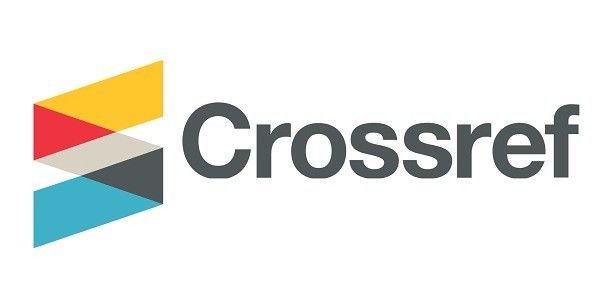Teknik Desain Primer untuk Amplifikasi Gen Tujuan Kloning dari DNA Agrobacterium tumefaciens
Primer Design Techniques for Gene Amplification Purpose of Cloning of DNA Agrobacterium tumefaciens
DOI:
https://doi.org/10.30605/perbal.v10i3.2090Keywords:
Agrobacterium tumefaciens, desain primer, DNA, PCRAbstract
Penelitian ini bertujuan untuk menghasilkan teknik desain primer untuk amplifikasi gen penyandi enzim dengan tujuan kloning dari DNA genom Agrobacterium tumefaciens. Metode pengumpulan informasi dari penelitian ini dilakukan dengan cara observasi langsung dan melakukan studi pustaka untuk menarik kesimpulan. Prosedur penelitian dimulai dari mengoleksi sekuen DNA genom Agrobacterium tumefasien dari gene bank (NCBI), desain primer menggunakan Genamics expression dan penambahan situs restriksi. Primer yang telah diperoleh dikonfirmasi melalui perangkat lunak past PCR dan amplifikasi gen dengan teknik polymerase chain reaction. Produk hasil amplifikasi dikonfirmasi menggunakan enzim restriksi SalI. Hasil penelitian yang telah diperoleh berupa poduk PCR berukuran 870 bp dan hasil konfirmasi menggunakan enzim SalI menghasilkan dua pita yaitu berukuran 359 bp dan 510 bp. Berdasarkan hasil yang diperoleh dapat disimpulkan bahwa teknik desain primer tujuan amplifikasi gen untuk kloning dapat dilakukan yaitu dengan kombinasi antara software dan melakukan penyisipan situs restriksi secara manual.
This study aims to produce a primer design technique for amplification of the gene encoding enzyme towards the cloning of gene from Agrobacterium tumefaciens. The genes information were collected from literatures study to decide the target gene and primer design. Methods: Firstly, we used genome sequences of the Agrobacterium tumefasien which is available on the gene bank (NCBI) to design a pears of primers, using Genemics expression, for amplifying the gene target. We also added restriction sites into the primers sequence. The specifity of primers designed then were evaluated by past PCR in silico software using the genome sequences as template and were confirmed by polymerase chain reaction amplification technique using the genome isolated from Agrobacterium tumefaciens as template. The targent gene was confirmed using the restriction enzyme SalI. Results: From Fast PCR amplification in silico, we obtained a single band with size of 870 bp, means that the primer designed were specific to the target gene. The PCR product has the same size with those of insilico study, and was digested with the SalI restriction enzyme, resulting two fragments with length of 359 bp and 510 bp, respectivelly. Conclusion: the amplificated genes was the target gene and the primers were successful designed.
Downloads
References
Aisah, I. Litani, F.N, Hendra, S.M. (2018). Rekombinasi Molekul DNA. Jurnal Ilmiah Matematika dan Pendidikan Matematika. Vol.10 (1): 2550-0422.
Apte, A. and S. Daniel. (2009). PCR Primer Design. Cold Spring Harbor Laboratory Press. Vo.4(3). doi:10.1101/pdb.ip6.
Camilo, C.M. Lima, G.M.A., Maluf, F.V., Guido, R.V.C and Polikarpov, G. (2016). HTP-Oligo Designer: An Online Primer Design Tool for High-Throughput Gene Cloning and Site-Directed Mutagenesis. Journal of Computational Biology. Vol.23 (1). DOI: 10.1089/cmb.2015.0148.
Indradewi, R., B. Saksono, dan Miftahudin. (2017). Isolasi, Kloning, dan Eksoresi Gen dpe dari Agrobakterium tumefasiens sebagai gen penyandi Enzim D-Psicose 3-Epimerase (DPEase). Tesis.https://repository.ipb.ac.id/handle/123456789/91476.
Kim, K., H.J. Kim, D.K. Oh, S.S. Cha and S. Rhee. (2006). Crystal Structure of D-psicose3-Epimerase from Agrobacterium tumefaciens and its complex with true substrate D-fructose: A pivotal role of metal in catalysis, an active site for the non-phosphorylated substrate, and its conformational changes. J. Mol. Biol. 72: 981-985 (2006).
Salomonsen B., U. H. Mortensen, and B.A. Halkier. (2014). DNA Cloning and Assembly methods: USER-Derived Cloning Methods and Their Primer Design. Humana Press. New York. https://doi.org/10.1007/978-1-62703-764-8.
Suparman, H.Ahmad, Z.Ahmad. (2016). Desain Primer PCR secara In Silico untuk Amplifikasi gen COI pada Kupu-Kupu Papilio Ulysses Linnaeus dari Pulau Bacan. Jurnal Pendidikan Matematika dan IPA. Vol.7 (1):14-24.
WWW. Designing Primers for PCR (genamics.com). Diakses tanggal 2 Agustus 2022.
Downloads
Published
Issue
Section
License
In submitting the manuscript to the journal, the authors certify that:
- They are authorized by their co-authors to enter into these arrangements.
- The work described has not been formally published before, except in the form of an abstract or as part of a published lecture, review, thesis, or overlay journal.
- That it is not under consideration for publication elsewhere,
- That its publication has been approved by all the author(s) and by the responsible authorities – tacitly or explicitly – of the institutes where the work has been carried out.
- They secure the right to reproduce any material that has already been published or copyrighted elsewhere.
- They agree to the following license and copyright agreement.
License and Copyright Agreement
Authors who publish with Onoma Journal: Education, Languages??, and Literature agree to the following terms:
- Authors retain copyright and grant the journal right of first publication with the work simultaneously licensed under Creative Commons Attribution License (CC BY 4.0) that allows others to share the work with an acknowledgment of the work's authorship and initial publication in this journal.
- Authors are able to enter into separate, additional contractual arrangements for the non-exclusive distribution of the journal's published version of the work (e.g., post it to an institutional repository or publish it in a book), with an acknowledgment of its initial publication in this journal.
- Authors are permitted and encouraged to post their work online (e.g., in institutional repositories or on their website) prior to and during the submission process, as it can lead to productive exchanges, as well as earlier and greater citation of published work.














